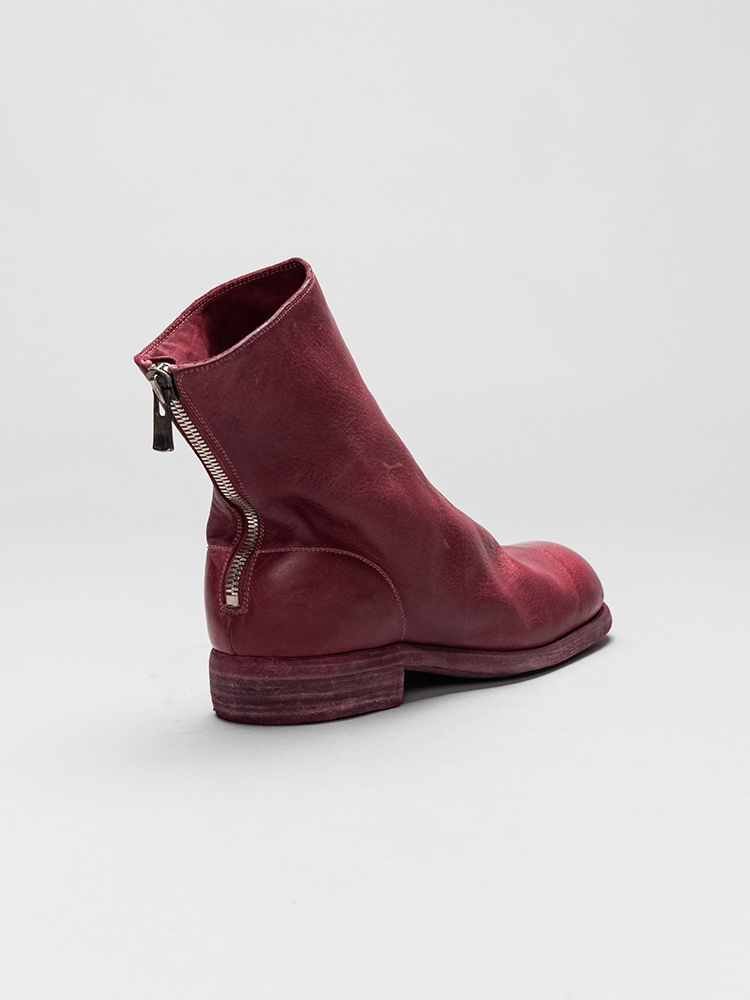In a high output, low quality consumer world, the distinction of ‘Made in Italy’ has always been a hallmark of quality. The association is one of precision and care, of generational skills masterfully and laboriously applied in the pursuit of ultimate luxury.
Normally you would expect to see these words stamped on the sole of a Ferragamo stiletto, or stitched into the lining of a Zegna suit—all the usual suspects, in other words. But there has for some time now been a wave of Italian producers for whom the words ‘Made in Italy’ signify not glitter and buttonholes, but handiwork and a rugged almost industrial product. Guidi is one of these producers.
Founded in 1896 by Guido Guidi, Giovanni Rosselini and Gino Ulivo, the company was first established as a tannery, a capacity in which it operated quietly for the next century, quietly employing traditional, centuries old processes that produced skins of an unmatched quality—something that would lead to Guidi becoming beloved by high end brands and artisans such as Prada, Rick Owens and Carol Christian Poell. Nowadays, the company is known more for their imposing boots and eye-catching bags than the luxurious leathers they are crafted from, a shift in the company’s approach that began in 2003 under Ruggero Guidi.
The result would become Guidi’s signature: shoes that were softened, worn, and aged to a degree that matched their traditional origins.

While running the family business, Ruggero began to collect old hiking boots and workers shoes, drawn to them as historical objects imbued with a sense of craftsmanship that was increasingly rare to find. Inspired by the pieces in his collection, Ruggero set out to recreate them using leather from his tannery, eventually showing them to Alessia Righi Amante, a former employee of cult label Carpe Diem who at that time was running a showroom in Paris. Amante was impressed, but disliked the sheen of newness that Guidi’s shoes carried, and suggested he wash them in the tanning drums at his factory. The result would become Guidi’s signature: shoes that were softened, worn, and aged to a degree that matched their traditional origins.
More than 15 years later, Guidi has grabbed the attention of a discerning fashion crowd, cultivating customers around the world who are drawn to the brand’s unique shapes, experimental colours and peerless craftsmanship. Their shoes—which now sell thousands of pairs each year—continue to be made in-house, travelling just 10 minutes down the road to be assembled by a dozen-strong team of artisans in the employ of Paolo Rugiati, an old friend of the Guidi family, before returning to the tannery for dyeing and finishing. Another crucial Guidi signature, object dyeing is something of a buzzword in the artisanal fashion scene, and involves dyeing the shoes in their final form: soles, zips and all. Object dyeing is time consuming and unpredictable, often yielding various shades of colour within the item depending on the raw materials used—something that would never fly in a run of the mill retail product, but which is precisely the appeal of a Guidi boot, and part of what commands their premium price.
At $2,000 a pair, you might wonder how much of a market there even is for such a product, and that’s before you get into the fact that what Guidi makes is not easy and approachable, but aggressive and uncompromising in its aesthetic. The reality is that these aren’t shoes for everyone, and those that follow the brand do so because, like generations of the Guidi family, they believe in craftsmanship, quality, and the essence of what it means to be Made in Italy.
Find out more at guidi.it
Words — Nick Ainge-Roy
Images — INN7






